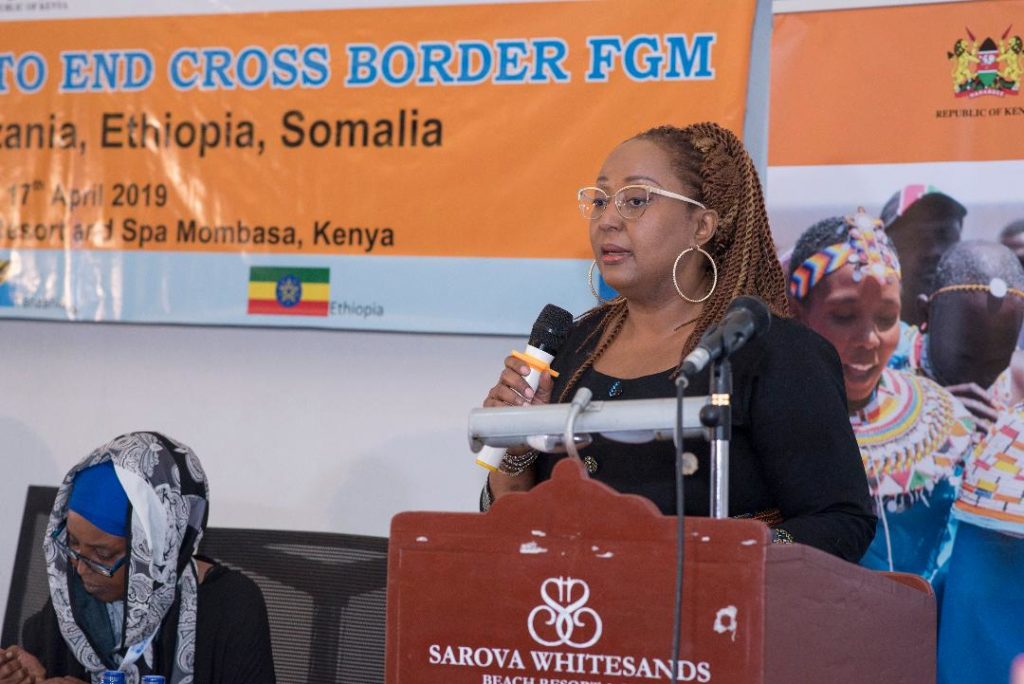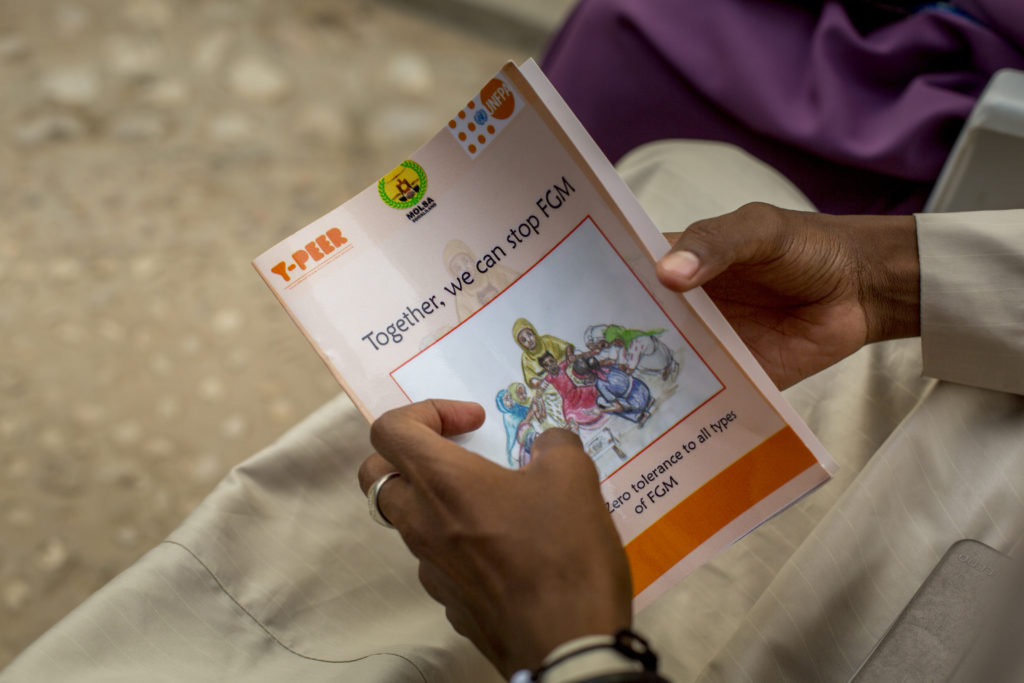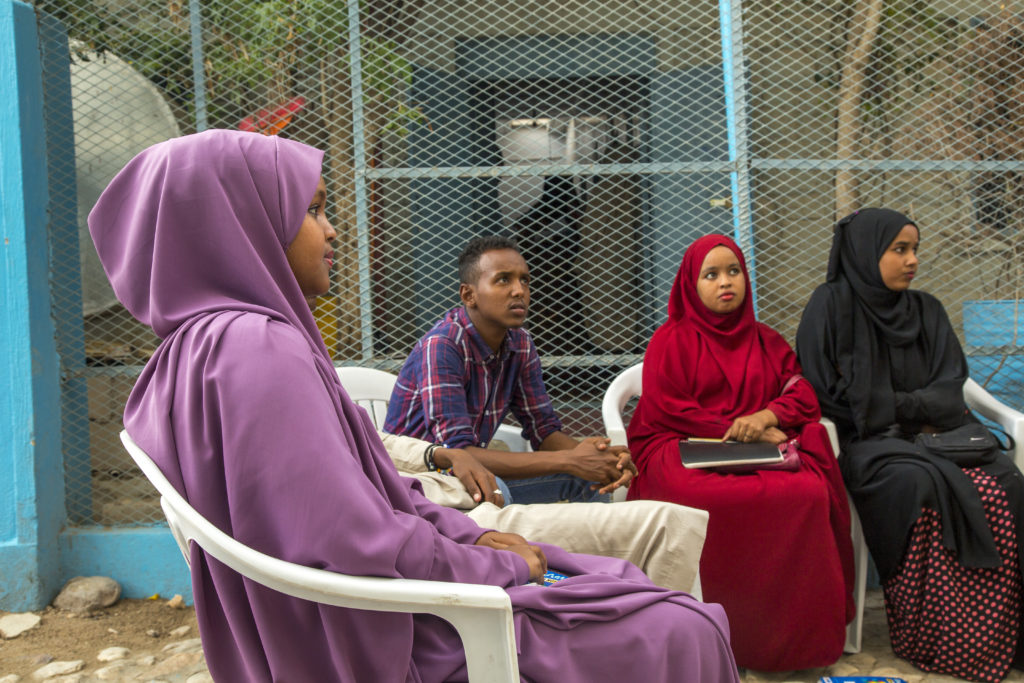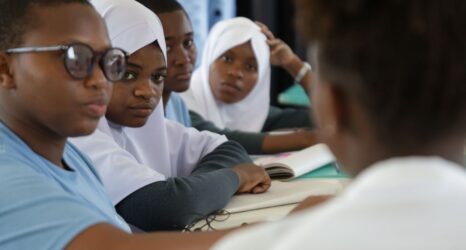More than 200 million women and girls alive right now have undergone some form of female genital mutilation (FGM), which incurs serious health risks and psychological consequences. To illuminate where the global battle against this human rights violation is currently headed, there are few better-qualified experts than Nafissatou J. Diop.
Diop is a senior United Nations Population Fund (UNFPA) advisor and coordinates the joint program with UNICEF for eliminating FGM. She holds a Ph.D in demography and population studies from the University of Montreal and hails from Senegal, one of 17 African and Middle Eastern countries where the UNFPA supports anti-FGM efforts by government and civil society organizations.
Diop talked to Ms. at Women Deliver 2019, the world’s largest conference on gender equality, about what it will take to end FGM—and what keeps her fighting.

For observers in the developed world, it can be hard to understand why FGM persists. How do you explain the rationale?
It’s a normative practice. Everybody has to comply with that way of being or acting. The girl is seen as belonging to her whole community and they want to ensure that she is trustworthy, quiet, not permissive.
It’s a very important element for communities that practice FGM: They think that by practicing FGM, cutting the clitoris or sewing or whatever, they will increase the probability for a girl or woman to stay a virgin or stay faithful. So you have to understand that logic. Everyone who is not within that logic and wants to escape—“no, my daughter will not go through this practice”—will be ostracized. It means you’re rejecting community practices, so you are outside that community and you are marginalized.
How can educators and activists make headway in communities where FGM is traditional?
When you come into a village or a city neighborhood, you have someone in charge. It’s usually the village chief or the imam. People like that need to be your entry points.
You need to first request some authorization to be there, explain why you came, and get their blessing—”yes, we’re opening the doors, and this is important to bring information and education to our women, our community for their health and well-being.”
Now, those people will never attend those education sessions. They’re mostly attended by women, girls and young people. However, you need to make sure this core group of people will walk with you and be exposed continuously to the message. It’s not a one-shot activity.
We’ve seen that a lot with civil society organizations. Sometimes they just come, give one health talk or discussion and expect this will trigger change. No! It doesn’t work like that. You need to have a regular and intense exposure of the people to the same information and messaging. Let them reflect, let them speak, let them think about it. It takes weeks and months to change their vision.

And how do you keep the momentum going?
There is what we call “organized diffusion” of the information. Within the health talk and discussion, you’re asking people to reach out to others: “Who do you think you can reach out to with the information that you got today?” Some of them will say: “My husband. My best friend. My daughter who is not here because she’s attending school or she’s in the U.S. or Europe, and I’ll share with her through text message or WhatsApp.”
It’s like a snowball effect. You are empowering these people so they can reach out and empower others themselves. The more everyone agrees that this practice is harmful, the more sustainable your decisions will be.
In some countries, like Egypt, FGM has been increasingly medicalized. How do you combat it when people say, “oh, it’s clean and safe because a doctor, rather than a traditional practitioner, is doing it”?
In terms of our programming, the most important thing is to make sure that we are building within the medical schools, the midwifery schools, the nursing schools and so on. We make sure that this issue of FGM is addressed there.
In Egypt, three years ago, they reviewed the legislation to make the punishment stronger for health providers who do it, and also empowered them to resist community pressure. Remember, these providers are just people from the same community as the others. They’ve been raised to think that FGM is an acceptable norm. Now they’re doctors, and you want them to be different than the whole community. They’re not thinking it’s a big deal: “It’s just a small cut. It helps to keep the girl a virgin and faithful.”
Historically, in the curriculum, there’s nothing about FGM, human rights or women’s rights. There is nothing about the legislation. So we need to empower health providers within their different spaces. It could be a movement like Doctors Against FGM—medical doctors themselves standing up and speaking out, a network of people who denounce FGM and promote the value of women and girls. It’s important for it to come from within the doctors’ community.

What else needs to happen to create an anti-FGM consensus and meet your goal of ending it by 2030?
If you want to end FGM, you need to think about spreading the movement and changing this norm within an ethnic group. This is why we talk a lot about cross-border issues.
For instance, Fulani people are spread from West Africa almost to East Africa. It’s the same ethnic group. The language may vary a little bit here and there, but they’re all practicing FGM. So if you end FGM within the Fulani population of Senegal, you haven’t finished your work, because girls from Senegal can get married to Fulani men who live in Guinea or some other country.
Then there’s a problem, because you haven’t changed their way of thinking. If people find their daughter’s opportunity to have a husband will be reduced because she hasn’t undergone FGM, they will do it. You have to make sure that the expectation with their future marriage partner is the same.
According to the UN, from 2008 to 2017, more than 34 million people made public declarations about abandoning FGM in some 21,000 communities. What is an individual success story you can point to?
Tostan, an NGO in Senegal, was working on FGM. Tostan enabled a whole village to declare the abandonment of female genital mutilation. That came after a literacy program on human rights, health, problem-solving and hygiene.





